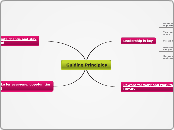av Ethan Kwan 14 år siden
717
Team L'ship & Self Managed Teams
Effective leadership and well-structured team meetings are essential for achieving organizational goals. Leaders should develop skills to manage various team dynamics, including handling problematic members like silent participants, excessive talkers, and arguers.









